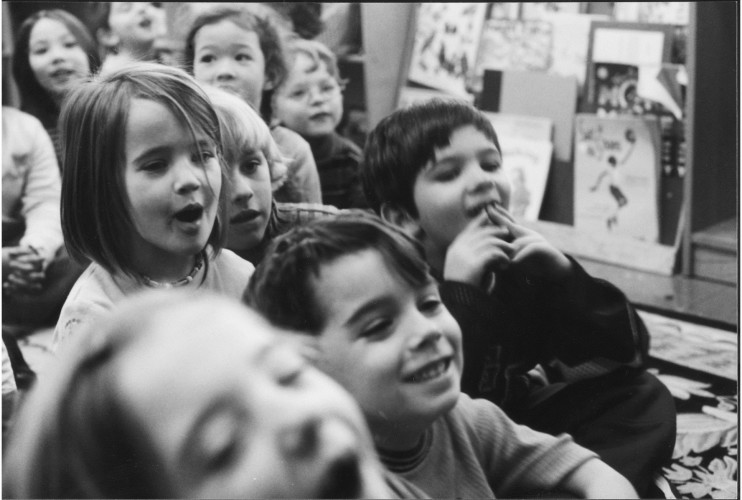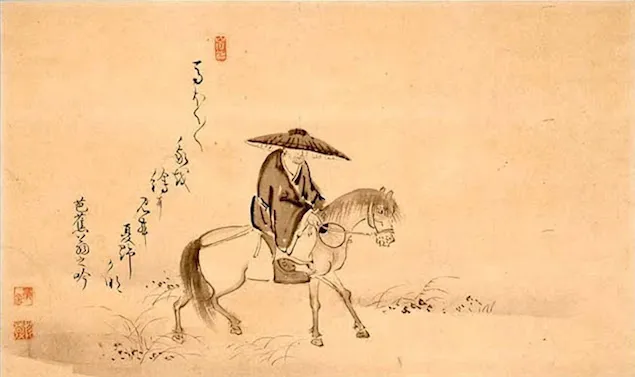Humans are hard-wired for narrative. When I was in graduate school, one of my professors told us that there’s really just one story: The Journey Story. Whether or not that’s true, the “journey” story is the basis for so many of the stories we know and love. This loose and structured narrative prompt takes students on their own journey as they walk the road of their own inner worlds.
I’ve used this exercise in writing classes from fourth grade to MFA classes. I first used it in a sixth grade arts in education class—the first class I ever taught as a writer—and I was startled at the response. Many students in the class had no interest in writing and claimed they couldn’t write for more than five minutes, lost attention, didn’t care, or had no idea how to write anything. Yet they all wrote for 45 minutes with such concentration I was as dumbfounded as they were. How do I account for this?
Humans are hard-wired for narrative.
I deliver the below questions one at a time, verbally, giving them generally five to 10 minutes to respond to each prompt. But mostly I watch as they’re writing, waiting for when they put down their pens and pencils and start stretching their hands out. I give them a one minute warning, then we move on to the next question. And yes, I do insist on pen or pencil and paper for this—no laptops allowed. It slows them down enough that they can look into their own minds for answers, while at the same time releasing them from the pressure of creating “assignments” in their usual computer space.
Here is the prompt:
Walking along the Road
- You’re walking along a road. It can be anywhere, any time. Woods, beach, city streets, another planet, another time. Describe the road. What does it look like? What does it smell like? What’s the weather? What’s the sound? What’s the quality of light? Who or what else is there?
- You see a key. Describe it. Do you know what it goes to? Do you pick it up? Leave it there? Or something else (i.e., bring it to a lost and found)?
- You come to a creature who is stuck in some way—tied to a tree, locked in a cage, stuck in a hole or other obstacle. What is the creature, and what do you do? Leave it there? Free it? Take it with you? Describe why you made the choice you made.
- As you continue on your journey, you reach an obstacle. Perhaps a wall, or a ravine or some other obstacle. Describe it. What do you do in response? Climb over? Dig through? Leap? Turn around? Take a different road?
- You continue on your journey, and you reach a body of water. Could be any kind of water—an ocean, a puddle, a river. What do you do? Jump in and swim? Splash through? Walk around?
- Ahead of you, you see your home. Could be the home you grew up in, your dream home, a home you’ve never seen, a home you’ve dreamed about, either scary or welcoming. Describe it, and your feelings about it, and say what happens next.
I do allow students to ask questions as they write. The most common question is what they should do if they go “off script,” meaning their writing has taken them someplace that doesn’t fit the questions. I tell them to include what you can but follow the energy of the story. This allows the writer to dive into their own process and begin to know what that “energy” feels like.
You’re walking along a road. It can be anywhere. . . . Woods, beach, city streets, another planet, another time.
I do not, absolutely do not, prep them with journey stories from other areas first, for many reasons. First, I want them to explore a realm where they are the ultimate authority. Nobody can tell them they got it wrong because this realm of their mind is not subject to the criticism of the academy, but is a place only they know, and a place they can trust. Second, it allows them to understand the feeling of being so deep in the process that what they write can flow naturally onto the page, without concerns of whether they got the “journey” story right. Third, I’ve done training with the Lincoln Center Aesthetic Arts program as an Arts in Education teacher. Central to that training is that students engage with art in more depth and efficacy if they are first acting as artists. For instance, if the students are going to have a storyteller come into class and tell stories of freedom, I might first have them make drawings of what freedom looks like to them or create a song about what it means to be free. After they see the storytelling, they can contribute their own work to the discussion. In the Walking the Road exercise, the students will understand reading a journey story with more emotional and intellectual connection if they’ve first written their own.
This exercise takes up an entire class of 45 minutes at the least. I’ve also conducted it for college level students in classes that run for 90 minutes and taken up the entire class. Their written journeys are sometimes on city streets, sometimes on other worlds, sometimes in the wild. It’s consistently astonishing to hear the places, creatures, actions that occur within their own inner worlds. As an author who has long been addicted to the joy of imagination, I’m thrilled that I’ve been able to connect them to theirs. It’s an often undervalued asset, but one that I think does truly open new worlds.
I want them to explore a realm where they are the ultimate authority. Nobody can tell them they got it wrong because this realm of their mind is not subject to the criticism of the academy . . .
About a decade after I first introduced this exercise to the sixth grade class, I was sitting in a restaurant, waiting for friends to arrive. While I waited, I was working on a manuscript. A waiter came over to my table and asked if I wanted anything. I told him I was waiting for friends, and he was about to leave, when he looked down and saw my name on the manuscript.
“OH! I know you!” He exclaimed. “You taught a writing workshop when I was in sixth grade! You’re the reason I’m a writer!”
I asked about his writing career so far, what he was exploring as a writer, what he hoped for. It was a lovely conversation, and he credited this assignment in particular, as well as my response to what he wrote, as the spur that drove him forward into writing.
Knowing the difficulties as well as the joys of the writer’s life, I was happy and worried for him, but particularly glad that our work had borne fruit for this young man. I think it’s at least partly because this exercise becomes a template to explore what “free writing” actually feels like, and what it means to dive deeply into your own imagination without constraint.
Featured photo by Tomas Anunziata.

Barbara Chepaitis
Barbara Chepaitis is author of 12 published novels, including the critically acclaimedFeeding ChristineandThese Dreams, as well as the sci-fi series featuring Jaguar Addams. The fourth novel in that series,A Lunatic Fear,was a nominee for a Romantic Times Bookclub award. Her first nonfiction book,Feathers of Hope, led her into helping a Navy SEAL rescue a wounded eagle from Afghanistan, an event that had broad media coverage. The story of that event is told in her nonfiction book,Saving Eagle Mitch: One Good Deed in a Wicked World. Her scripts have been optioned and have placed finalist with Sundance Screenwriter’s Lab and semifinalist with Nicholl Fellowship. She was awarded a seed grant to develop a documentary titledMaking Peace,and produced a short film,All For the Birds.She is founder the storytelling trioThe Snickering Witches and past concentration director in fiction for Western College of Colorado’s MFA in creative writing.



